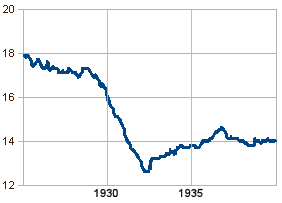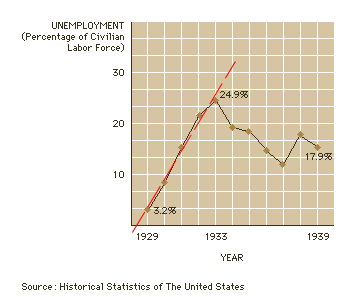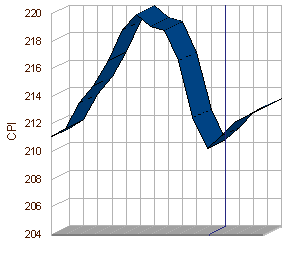Here’s what’s coming in economic news: The next employment report could show the economy adding jobs for the first time in two years. The next G.D.P. report is likely to show solid growth in late 2009. There will be lots of bullish commentary — and the calls we’re already hearing for an end to stimulus, for reversing the steps the government and the Federal Reserve took to prop up the economy, will grow even louder. But if those calls are heeded, we’ll be repeating the great mistake of 1937, when the Fed and the Roosevelt administration decided that the Great Depression was over, that it was time for the economy to throw away its crutches. Spending was cut back, monetary policy was tightened — and the economy promptly plunged back into the depths.
This shouldn’t be happening. Both Ben Bernanke, the Fed chairman, and Christina Romer, who heads President Obama’s Council of Economic Advisers, are scholars of the Great Depression. Ms. Romer has warned explicitly against re-enacting the events of 1937. But those who remember the past sometimes repeat it anyway.
… Which brings us to the still grim fundamentals of the economic situation. During the good years of the last decade, such as they were, growth was driven by a housing boom and a consumer spending surge. Neither is coming back. There can’t be a new housing boom while the nation is still strewn with vacant houses and apartments left behind by the previous boom, and consumers — who are $11 trillion poorer than they were before the housing bust — are in no position to return to the buy-now-save-never habits of yore.What’s left? A boom in business investment would be really helpful right now. But it’s hard to see where such a boom would come from: industry is awash in excess capacity, and commercial rents are plunging in the face of a huge oversupply of office space. Can exports come to the rescue? For a while, a falling U.S. trade deficit helped cushion the economic slump. But the deficit is widening again, in part because China and other surplus countries are refusing to let their currencies adjust.
So the odds are that any good economic news you hear in the near future will be a blip, not an indication that we’re on our way to sustained recovery. But will policy makers misinterpret the news and repeat the mistakes of 1937? Actually, they already are….



The CPI in 2008 and the first 4 months of 2009
The Obama fiscal stimulus plan is expected to have its peak effect on G.D.P. and jobs around the middle of this year, then start fading out. That’s far too early: why withdraw support in the face of continuing mass unemployment? Congress should have enacted a second round of stimulus months ago, when it became clear that the slump was going to be deeper and longer than originally expected. But nothing was done — and the illusory good numbers we’re about to see will probably head off any further possibility of action.Meanwhile, all the talk at the Fed is about the need for an “exit strategy” from its efforts to support the economy. One of those efforts, purchases of long-term U.S. government debt, has already come to an end. It’s widely expected that another, purchases of mortgage-backed securities, will end in a few months. This amounts to a monetary tightening, even if the Fed doesn’t raise interest rates directly — and there’s a lot of pressure on Mr. Bernanke to do that too.
Will the Fed realize, before it’s too late, that the job of fighting the slump isn’t finished? Will Congress do the same? If they don’t, 2010 will be a year that began in false economic hope and ended in grief.
Sorry, the comment form is closed at this time.